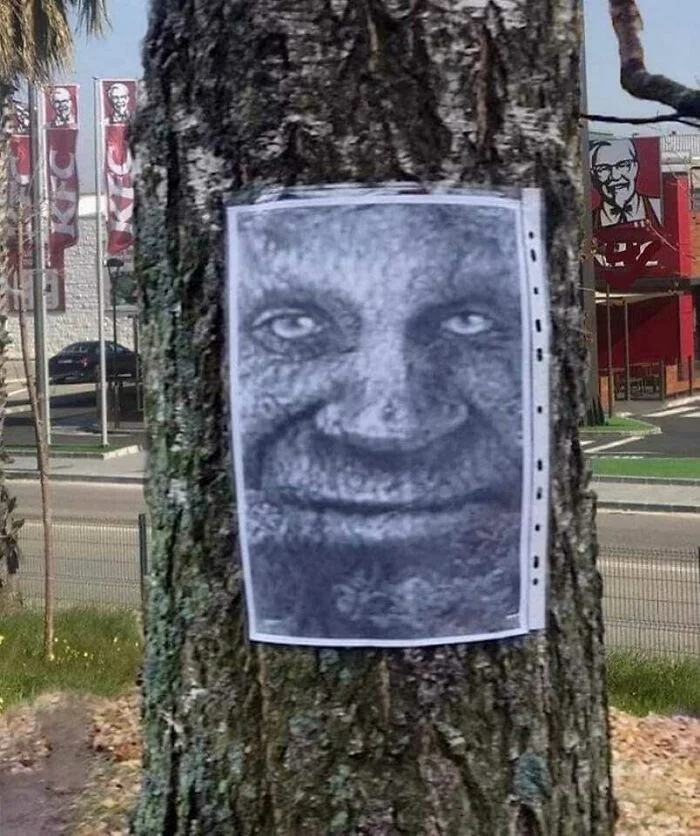Art has always been a powerful medium of expression, captivating audiences and eliciting a range of emotions. However, amidst the vast and diverse realm of artistic creations, there exists a subset that goes beyond the conventional boundaries of aesthetics and takes on an eerie, mysterious aura—cursed art images. These images, often surrounded by tales of misfortune, tragedy, and supernatural occurrences, have intrigued and unsettled art enthusiasts and skeptics alike. In this exploration, we delve into the enigmatic world of cursed art, examining the stories behind infamous pieces, the cultural implications, and the psychological impact on those who dare to gaze upon them.

The Historical Context of Cursed Art:
Cursed art is not a recent phenomenon; its roots can be traced back through centuries of art history. One of the most renowned examples is the “Crying Boy” painting, a mass-produced work by artist Giovanni Bragolin in the 1950s. Legend has it that a series of house fires left only the “Crying Boy” paintings untouched, leading to speculation that the artworks themselves were cursed. This incident sparked widespread fear and controversy, embedding the painting in the public consciousness as an ominous icon.
Another notable example is the portrait of the “Anguished Man,” painted by an unknown artist. Supposedly, the artist used his own blood mixed with the paint, and tragic events were said to unfold in the life of anyone possessing the painting. The mysterious history of cursed art is often intertwined with tales of tragedy, raising questions about the relationship between artistic creation and supernatural forces.
Cultural Perceptions of Cursed Art:
Cursed art is not confined to a specific culture or time period; its presence can be found in various societies around the world. The stories associated with these artworks often reflect cultural beliefs, superstitions, and the collective imagination of communities. In some cultures, cursed art is seen as a manifestation of spiritual forces or divine retribution, while in others, it may be attributed to malevolent spirits or the paranormal.
The allure of cursed image art transcends cultural boundaries, captivating the human psyche’s fascination with the unknown and the macabre. These tales are often passed down through generations, becoming a part of the cultural fabric and contributing to the enduring mystique surrounding certain artworks.
Psychological Impact on Viewers:
The psychological impact of cursed art on those who encounter it is a subject of both skepticism and intrigue. While some dismiss the notion of a painting or sculpture having a tangible influence on one’s life, others argue that the power of suggestion and belief can shape one’s perception and experiences.
For those who subscribe to the idea of cursed art, the mere act of viewing such images can evoke feelings of unease, anxiety, or even fear. The psychological weight of the associated stories and legends can cast a shadow over the viewer’s experience, creating a heightened sense of foreboding.
On the other hand, skeptics maintain that the fear surrounding cursed art is rooted in the human tendency to seek patterns and narratives, even in random events. The psychological phenomenon of apophenia, where the mind perceives meaningful connections or patterns in unrelated stimuli, may play a role in the perception of cursed art as having a supernatural influence.
Notable Cursed Artworks:
- The Hands Resist Him: Perhaps one of the most famous examples of cursed art, this painting by artist Bill Stoneham gained notoriety when it was sold on eBay with claims of supernatural occurrences in its presence. The painting features a young boy and a doll standing in front of a glass door, with ghostly hands reaching out. The stories surrounding the painting include reports of the characters moving within the artwork and causing distressing experiences for those who owned it.
- The Haunted eBay Painting: In a curious turn of events, several art pieces sold on eBay have gained a reputation for being cursed. Sellers and buyers alike have reported strange and unsettling incidents associated with these artworks. While skeptics attribute these stories to coincidence or exaggeration, the tales contribute to the lore surrounding cursed art in the digital age.
- The Woman from Lemb: A figurine dating back to 3500 BC, the Woman from Lemb is an ancient artifact with a mysterious history. Believed to represent a goddess or priestess, the figurine is said to bring misfortune and tragedy to those who possess it. Several deaths and unfortunate events have been linked to individuals who owned or interacted with this ancient artifact, adding an air of mystique to its already enigmatic presence.
Conclusion:
Cursed art images occupy a unique space in the intersection of art, culture, and the human psyche. Whether viewed as supernatural relics or products of collective imagination, these artworks continue to capture the fascination of enthusiasts and skeptics alike. The stories that surround cursed art offer a glimpse into the complex relationship between belief, perception, and the enduring power of art to provoke emotion and contemplation.
As we navigate the realms of artistic expression, it is essential to recognize the subjective nature of the impact art can have on individuals. Cursed art, with its tales of tragedy and the supernatural, serves as a reminder of the enduring allure of mystery and the ways in which art can transcend the canvas to become a part of the collective consciousness. In the end, the true power of cursed art lies not in its alleged supernatural influence but in its ability to spark conversations, challenge perceptions, and evoke a range of emotions that make the artistic experience both profound and enduring.
